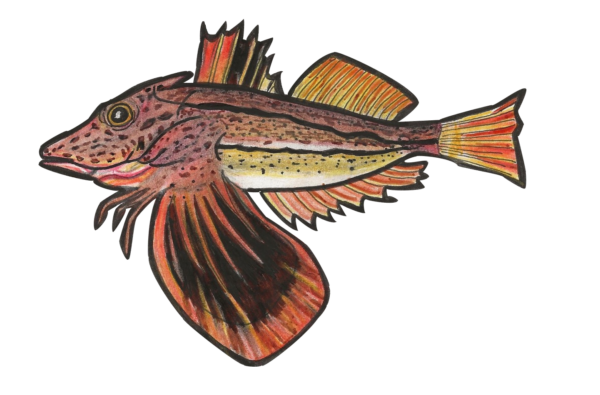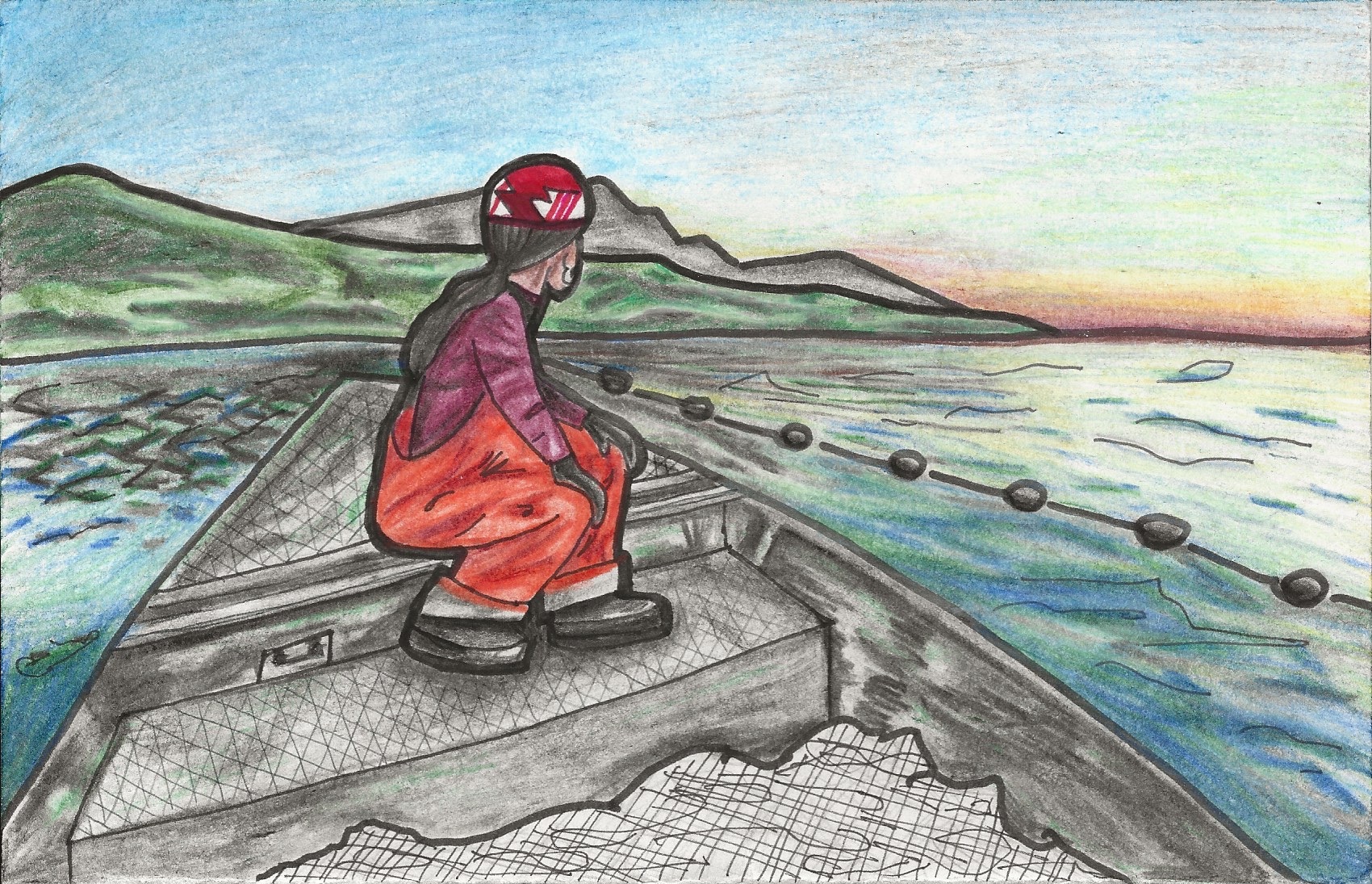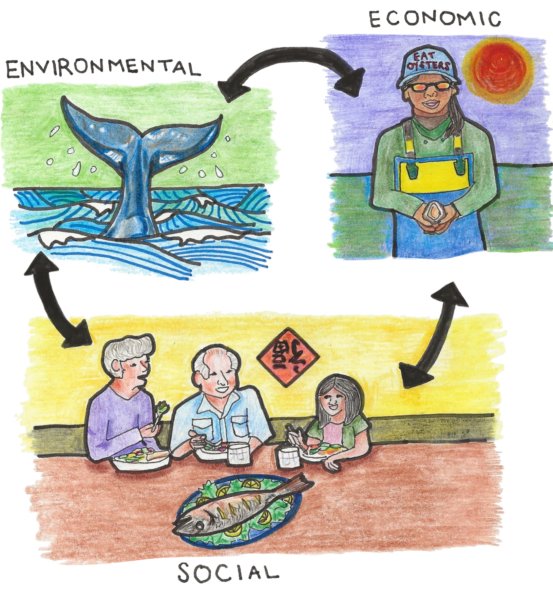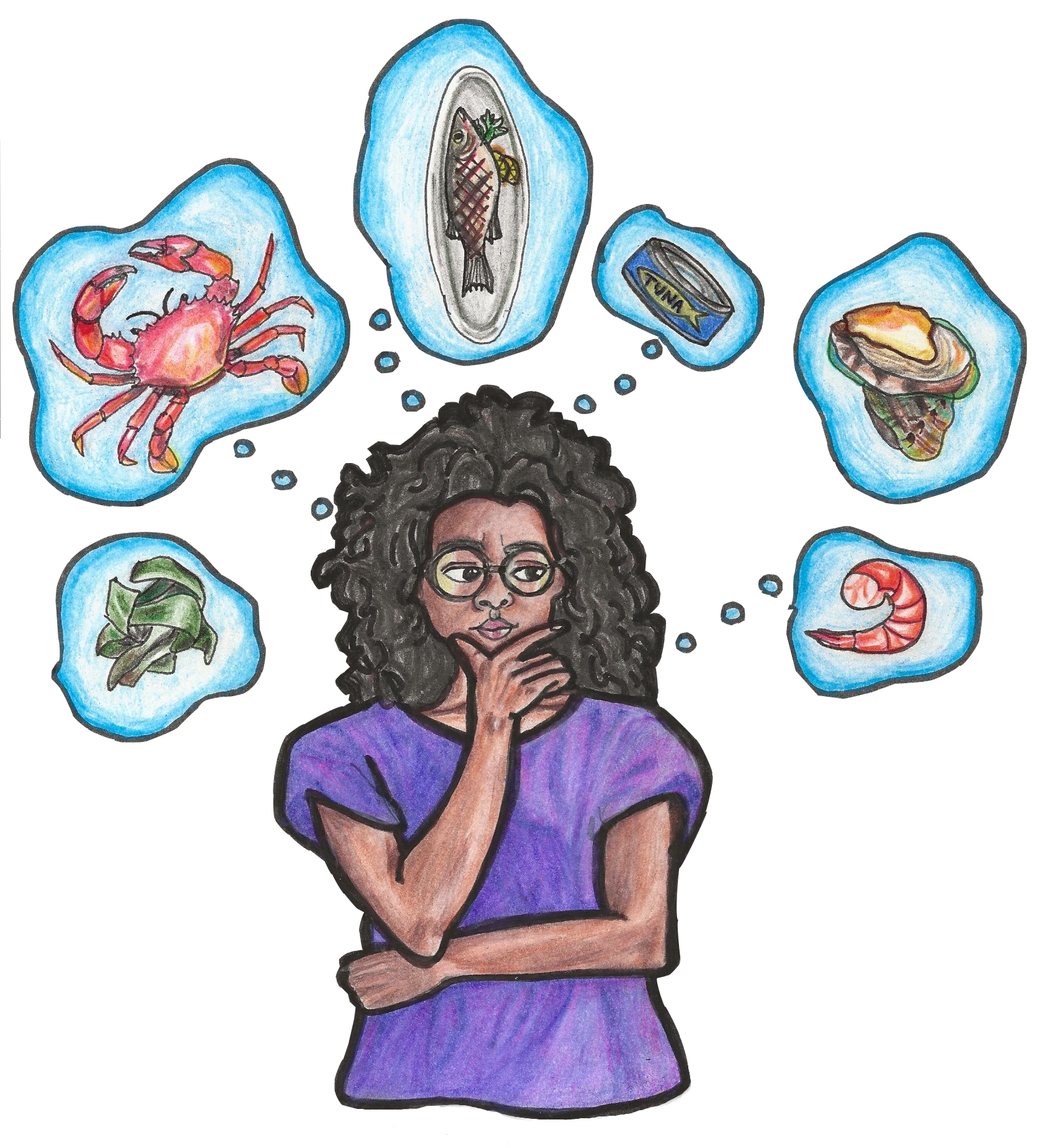Purpose of this Guide
This guide aims to provide a high-level overview of the seafood landscape in order to empower folks in making seafood purchasing decisions. It’s important to note that ethical consumerism alone won’t save our fishing communities nor the ocean. This guide hopes to raise awareness and encourage everyone to work toward changing public policy and getting more connected to your local seafood providers.
This guide also acknowledges that the current system is rife with inequities that prevent many people from having access to a range of healthy foods. In addition, the commodification of marine animals for the global seafood trade has pushed seafood off the plates of many peoples — especially indigenous peoples — who have historically relied on seafood for sustenance and subsistence purposes.
Still, millions of people eat commercially produced seafood and use labels and certifications to help them make their purchasing decisions. When seafood eaters base their seafood purchases solely on the label, they delegate their individual responsibility for making good purchasing decisions to the corporations trying to sell their fish. Having a few simple rules of thumb can guide sustainable seafood choices and prevent one from falling for deceptive advertising or dubious claims.
Guidelines for Making Sustainable Seafood Choices
Buy from local fishermen whenever possible.

Doing so contributes to a more sustainable way of life and better jobs in fishing communities. Eating local seafood means fishermen get a better return on less catch, which in turn means the ocean gets a break. Money spent locally tends to stay in the community, which for those of you who live in coastal communities means you’ll be supporting your own local economy. Buying from community-based seafood harvesters also ensures, to some extent, that you are eating fish that is “in season,” rather than perpetuating the century-old demand for “any seafood, any time” regardless of the ecological consequences.
Connect to the Local Catch Network
For over a decade NAMA has provided backbone support to what has now become the primary hub of values-based seafood businesses throughout North America. The Local Catch Network (LCN) supports and boosts alternative models of seafood business that include Community Supported Fisheries (CSFs), fish to farmers markets, institutional purchasing, and more. Rooted in core values, LCN also provides an extensive list of ‘bait box’ resources to start your own CSF or find support from like-minded folks.
What if you don’t live near the coast?
The definition of “local” is evolving and we encourage you to buy local and directly sourced seafood whenever possible. Increasingly, values-based seafood businesses are able to ship directly to eaters while providing transparency and accountability to those who caught the fish. Utilize the Local Catch Seafood Finder to find a harvester near you or one that can ship to you.
Eat fish that looks like fish!

Eating highly processed fish that doesn’t look like fish makes us further removed from the ocean and seafood harvesters. Challenge yourself to learn about cooking with whole, bone-in fish, and utilizing some of the less visually appealing parts for stocks and stews. Check out Eating with the Ecosystem’s resources on how to eat seasonally, learning to working with different species when they’re available.
Avoid fake or imitation seafood products.
A majority of imitation seafood products come from factory style fishing operations, with Alaska Pollock being the number one example of fish that is marketed as something else entirely. Often, it’s turned into surimi to make fake lobster or crab meat. Incidentally, like many other species, Alaska Pollock plays a critical role in the North Pacific’s marine food web, so when it’s depleted, other fish stocks and marine animals suffer too.
Ask how, where, and when your fish was caught.
Doing so lets your seafood dealer, waiter, or chef know that you care about their buying choices. If whoever is selling or serving you the fish doesn’t have the answer, or the answers you wanted, choose something else.
Eat wild seafood whenever possible.
The noble promise of aquaculture – to create more food for a growing world population – has, in most cases, only repeated the errors of land-based industrial agriculture. That is why we suggest steering clear of most farmed species. If you do choose farmed seafood, prioritize species that are scaled appropriately, low-input and low-impact, like marine algae, filter feeders, and animals that eat wild or naturally occurring feed. See the FoodPrint of Farmed Seafood report to learn more.

Seafood Labels

While seafood labels and certification can help provide information about a product, it can be difficult to know what they mean. Different ecolabels address various standards, but no one label addresses all dimensions of environmental, economic, and social sustainability. It can also be difficult to tell if an ecolabel honestly addresses a standard, or if it simply a marketing claim.
To date, all third-party certifications have at least some issues of legitimacy and transparency. Some labels have proven themselves to be completely unreliable, vouching for certain aspects of sustainability while ignoring others, such as social impacts that are intricately connected to ecological ones. Labels requiring third-party certification can add cost to seafood; they can also limit market access only to producers that have paid for the label. Because certification often ends up being paid for by producers (not consumers), third-party certifiers become gatekeepers to markets.
Certification should not be controlled or influenced by any private organizations or companies. Instead, government regulatory agencies should instate a transparent labeling process, free from corporate and industry influence. Unfortunately, many labels are used for marketing and as of yet, no state or country has sound or proven policies that make labels synonymous with sustainability. Regional labeling, based on transparent state policies and enforcement that demonstrate socially, environmentally, and economically sustainable seafood practices, would be ideal.
Instead, consider seafood labels as a decent start to the conversation around sustainable seafood, but avoid only relying on them when making your purchasing decisions.
Values-Based Approach
Over a decade ago when NAMA and our network made clear that a values-based approach to seafood purchasing was a preferred alternative to a labels-based approach, we started to see a groundswell of support. Today, many other networks, organizations, and community efforts are creating a host of values-based guidelines and effectively shifting millions of dollars of seafood purchasing. Here are a few examples of guidelines developed in partnership with NAMA:
- Healthcare Without Harm created this Guide for Sustainable Seafood Purchasing that is currently being used to shift the purchasing power of health care institutions around the country.
- Real Food Challenge works to shift $80M+ of institutional food purchasing power toward ‘real food’ annually.
- Slow Fish is a campaign and network-extension of the global Slow Food movement. Slow Fish North America has been working with chefs and other food influencers around North America to apply the core values of good, clean, and fair food for all to seafood.
- One Fish Foundation aims to educate K-12 schools and beyond about sustainable fisheries and seafood and has generated this handy guide titled the 7C’s of Sustainable Seafood.
Creative Credits: All artwork provided by Feini Yin, Fishadelphia

